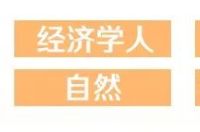
考研英语经济学人双语精读TE-2023-06-21期英文外刊|日本葬礼存在与离开(PDF版+Word版+音频)
Japanesefunerals:Up and awayAn ageing society is finding creative ways todisposeof its dead
【1】The sakashitasgatherin front of agiganticredballoon. Inside it are theashesof their late father, Haruhiko, and his late dog, Fuu-chan. On a count of three, Saiko, the dead man’s daughter, snips thestringtethering thehelium-filledorb. Itshootsinto the sky, with a dozen smaller balloons inpursuit. The family members watch—somewaving—until the balloonsdisappearinto the clouds. “Our father was a calm man, always travelling the world,” says his oldest son, Kohei. “Whenever we look at the sky, we will think of him.”
【2】In Japan, people aretraditionallycrematedafter death and theirashesburied. But in acrowded, ageing and largelysecularsociety, this is becomingtrickierand lessdesirable. Japan’s death rate issoaring—in2022the countrylogged1.5m deaths, the highest figure since the second world war. Grave sites are running out of space. There are fewergrievingrelatives around toperformfuneralrites, or to tend graves. As a result, theritualssurroundingdeath in Japan are changing.
【3】The “balloonfuneral” chosen by the Sakashitas was invented in2011by a Japanese firm calledballoonKobo, which has performed300suchfuneralsto date. Scatteringashesin the sea or mountains used to befrownedupon, but it has become widely accepted in recent years. “Tree burials”, wherebyburiedashesare marked by a sapling instead of agravestone, are even more popular. A survey showed that half of those whopurchasedgraves in2022chose treeburialsites. People are increasingly attracted to the idea of “becoming one with nature”, says Inoue Haruyo of Ending Centre, a non-profit that helps put people in touch withcemeteries. The new methods also tend to be much cheaper thanpurchasingtombstones, whichtypicallycost at least a million yen ($7,200). “Most people don’t want to bother their children after death,” says Onodera Yoshihiro, the president ofballoonKobo.
【4】traditionally, Japanese graves areinheritedby a family member, usually theeldestson, who is thenchargedwith payingfeesto thetemplesthat manage them. Since the1990s, as Japan’s birth rate has declined, there has been a growing shortage of suchcustodians. For many city-dwellers, visiting graves in their or theirancestors’ruralhome towns (as is expected duringcertainholidays, such as obon) is also increasinglytroublesome. Manyasheshave beendugup andtransferredas a result. In2020nearly120,000graves across Japan were thus “closed”.
【5】Japanese familiestraditionallyhold a days-longwakefor their dead relative and then the funeral service. But even where the old ways arehewnto,funeralsareshrinkingfor lack ofmournersor funds. In Japan, where lifeexpectancyis over80, manyoutlivetheir friends and close relatives. Partly to save money, it has become more normal todispensewith formalities such aslavishfuneralaltarsanddecorations. “The scale of one death has become smaller and smaller,” says Ms Inoue.funeralsandmourningare increasingly beingcombinedinto day-long affairs. Simply cremating bodies without anygatheringor funeralriteis also becoming more common. WhilefuneralsaretraditionallyBuddhist (and marriages Shinto), non-religiousfuneralsare also on the rise.
【6】Thesedisruptionsare not only easing the burden onbereavedfamilies. They are also changing the way Japanese think and talk about theirimpendingdemise. Selecting from a growing number of funeral options necessitates conversations about death, once ataboo. “Shukatsu”, or “death planning”, a term that combines the words for “end” and “activity”, has entered thelexicon. Beyond funeralpreparationit often entails taking greater care overbequestsand posthumousinstructionsthan was once the norm.
【7】“When he was alive, my husband said he would like to fly in the sky,” says Sakashita Akiko, Haruhiko’s wife, explaining why the family opted for aballoonfuneral. Their son Koheiechoesthesentiment. “We knew what our father wanted, and we wanted to respect that.”
①短语
1.原文:The sakashitas gather in front of a gigantic red balloon.
词典:in front of 在......前面
例句:He was dozing in front of the TV.
他在电视机前打瞌睡。
2.原文:Grave sites are running out of space.
词典:run out of 用完,耗尽
例句:We"ve nearly run out of paper. Do you think there"s enough for today?
我们的纸差不多已用完了。你看今天够用吗?
3.原文:As a result, the rituals surrounding death in Japan are changing.
词典:as a result 因此,结果
例句:As a result, services have been drastically reduced.
结果,服务被大大减少了。
4.原文:Scattering ashes in the sea or mountains used to be frowned upon
词典:frown upon 不赞成,反感
例句:This practice is frowned upon as being wasteful.
这种做法被认为是浪费而不被赞成。
5.原文:People are increasingly attracted to the idea of “becoming one with nature”
词典:be attracted to 被吸引到
例句:I"m attracted to warm, earthy colours.
我被温暖的土色吸引住了。
6.原文:a non-profit that helps put people in touch with cemeteries.
词典:in touch with 与......保持联系
例句:I"m definitely going to get in touch with these people.
我一定要联系上这些人。
7.原文:there has been a growing shortage of such custodians
词典:a shortage of 短缺
例句:There is a shortage of fresh water on the island.
岛上缺少淡水。
8.原文:But even where the old ways are hewn to
词典:hew to 遵循,坚持
例句:But that wouldn"t hew to Armstrong"s dreams.
但是,那样做就违背了阿姆斯特朗的梦想。
9.原文:where life expectancy is over 80
词典:life expectancy 预期寿命
例句:The average life expectancy was 40.
平均期望寿命曾是40岁。
10.原文:it has become more normal to dispense with formalities
词典:dispense with 无需;免除;省掉
例句:Can we dispense with the formalities?
我们可以免去这些客套吗?
②长难句
原文:The “balloon funeral”chosen by the Sakashitas was inventedin 2011 bya Japanese firmcalled Balloon Kobo, whichhas performed300 such funeralsto date.
分析:在这个句子当中,主句的结构采用了被动语态,其中The “balloon funeral”是句子的主语,was invented是谓词,by接状语,表示动作的发出者是a Japanese firm,其中chosen by the Sakashitas和called Balloon Kobo都是过去分词做后置定语,分别修饰的是主语The “balloon funeral”和宾语a Japanese firm。which引导定语从句,从句中which为主语,代指前面的Balloon Kobo这家公司,has performed为谓语,而300 such funerals是宾语。
译文:坂下一家选择了“气球葬礼”,该形式于2011年由一家名为Balloon Kobo的日本公司发明,迄今为止,该公司已经举办了300场这样的葬礼。
原文:Traditionally, Japanese gravesare inherited bya family member, usually the eldest son, who is then charged with paying fees to the temples that manage them.
分析:在这个句子当中,主干句子的主语是Japanese graves,are inherited是谓语,by接状语,表示动作的发出者是a family member,而usually the eldest son属于插入语,起到进一步解释的作用,who引导的定语从句是对the eldest son的进一步修饰限定,而that引导的定语从句修饰限定the temples。
译文:传统上,日本的墓地由某个家庭成员继承,通常是长子,他要向代为管理坟墓的寺庙支付费用。
③写作技巧
Whenever we look at the sky, we will think of him.
每当我们仰望天空,我们就会想起他。
“whenever”引导让步状语从句,表示“无论何时”,相当于at whatever time, no matter when等。引导时间状语从句,表示“每当”“一……就”,与when用法相似,但语气更强。当在写作的时候,可以适当的使用whenever引导的从句,增加语言的层次感和表达效果。
例句:
The roof leaks whenever it rains. (时间状语从句)
这屋顶一下雨就漏水。
Whenever I see him, he’s reading.
我无论什么时候看到他,他都在看书。(让步状语从句)
④背景知识
树葬:即人们以认养绿地的方法植一些树木,将亲人的骨灰撒在树下。传统大家对树葬的认知是指把骨灰深埋在一棵指定的大树下,或者把骨灰撒在土壤里,上面种上一棵树作为纪念的新的骨灰处理方式。树葬没有墓穴,没有或者使用可降解的特制骨灰坛。它只作标记,如:仅在树下放一块石头,石头上钉一块铜板,写上死者的姓名、生卒年月即可,或者在树上悬挂死者的纪念牌。不留坟头,不立墓碑,只占很少的土地。树葬是当今世界最先进的殡葬理念和行为之一。
气球葬礼:气球空中葬礼服务是向空中释放一个气球,然后将死者的骨灰送往外太空。在葬礼上放飞气球,作为对这个世界的最后告别的象征性姿态,这是葬礼服务中一种新的形式。 装有亲人骨灰的气球会越飘越高,直到它在空中爆炸,逝者骨灰的残骸会散落在空中,最后它们会庄严地飘散在地球上空。出于传统考虑,日本人会尽职尽责地为他们所爱的人的遗体提供最后的安息地。
⑤段落大意
【1】背景引入:坂下一家举办气球葬礼
【2】以小见大:日本葬礼方式出现新变化
【3】陈列举例:气球葬礼、海葬和树葬等成为新趋势
【4】墓园危机:传统墓园岌岌可危
【5】无奈之举:由于各因素影响,日本传统葬礼只能被迫简化
【6】优劣分析:减轻失亲家庭负担,改变人们对于“死亡”的思考和讨论方式
【7】死者为大:葬礼方式的选择也会有温度和人性
PS:各位研友下载请文末点击阅读原文.
366外刊社每日分享英文杂志关注攻众号:【英语外刊库】
考研英语杂志,考研英语外刊双语精读,经济学人杂志,英文杂志下载。
文件格式:True PDF ,①.下载方式:网盘下载②.是否支持编辑:支持③.文字内容:支持选取复制★能否打印:支持打印★
戳“阅读原文”下载外刊精读PDF Doc Mp3




